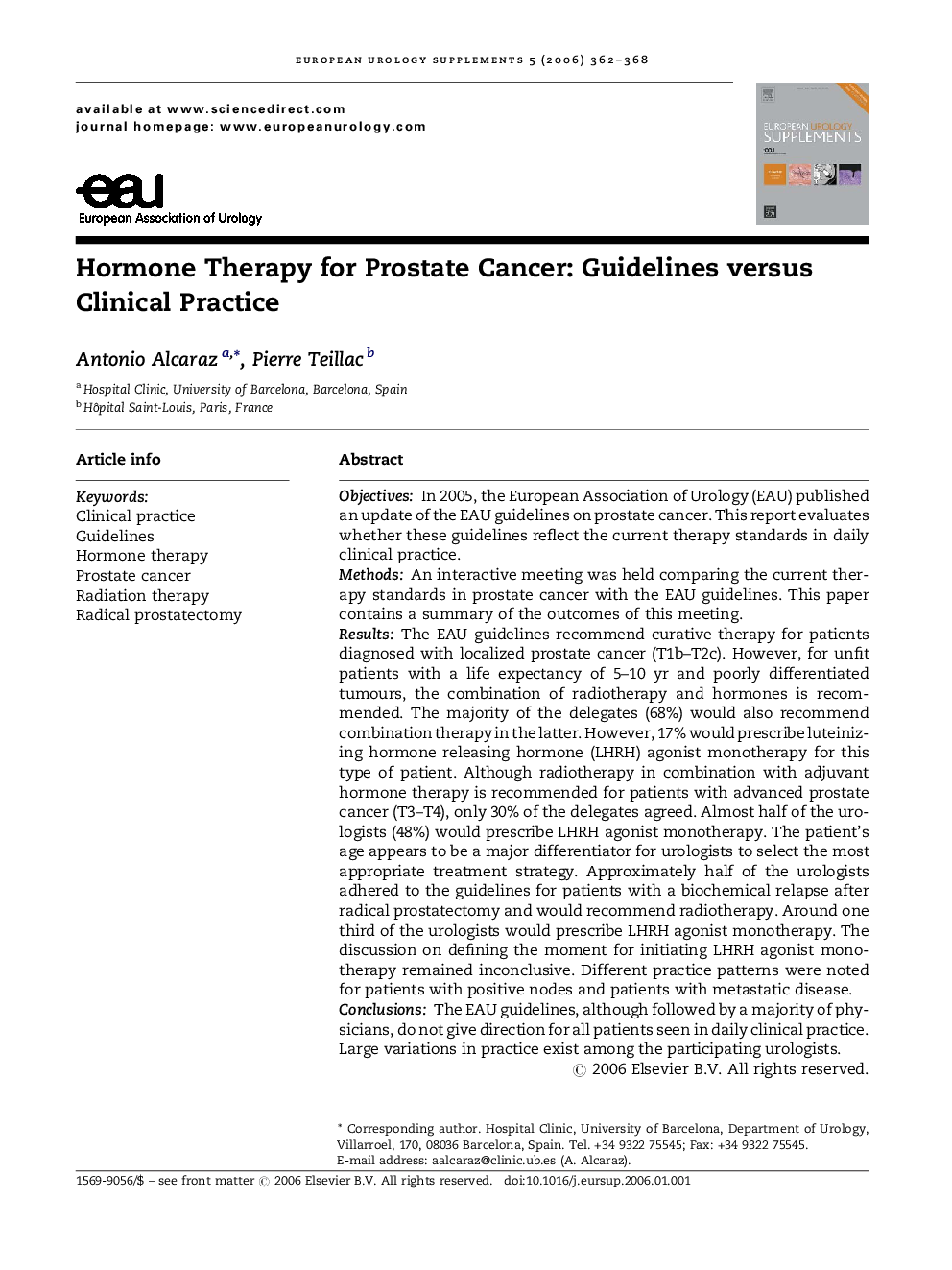| کد مقاله | کد نشریه | سال انتشار | مقاله انگلیسی | نسخه تمام متن |
|---|---|---|---|---|
| 3931674 | 1253307 | 2006 | 7 صفحه PDF | دانلود رایگان |

ObjectivesIn 2005, the European Association of Urology (EAU) published an update of the EAU guidelines on prostate cancer. This report evaluates whether these guidelines reflect the current therapy standards in daily clinical practice.MethodsAn interactive meeting was held comparing the current therapy standards in prostate cancer with the EAU guidelines. This paper contains a summary of the outcomes of this meeting.ResultsThe EAU guidelines recommend curative therapy for patients diagnosed with localized prostate cancer (T1b–T2c). However, for unfit patients with a life expectancy of 5–10 yr and poorly differentiated tumours, the combination of radiotherapy and hormones is recommended. The majority of the delegates (68%) would also recommend combination therapy in the latter. However, 17% would prescribe luteinizing hormone releasing hormone (LHRH) agonist monotherapy for this type of patient. Although radiotherapy in combination with adjuvant hormone therapy is recommended for patients with advanced prostate cancer (T3–T4), only 30% of the delegates agreed. Almost half of the urologists (48%) would prescribe LHRH agonist monotherapy. The patient's age appears to be a major differentiator for urologists to select the most appropriate treatment strategy. Approximately half of the urologists adhered to the guidelines for patients with a biochemical relapse after radical prostatectomy and would recommend radiotherapy. Around one third of the urologists would prescribe LHRH agonist monotherapy. The discussion on defining the moment for initiating LHRH agonist monotherapy remained inconclusive. Different practice patterns were noted for patients with positive nodes and patients with metastatic disease.ConclusionsThe EAU guidelines, although followed by a majority of physicians, do not give direction for all patients seen in daily clinical practice. Large variations in practice exist among the participating urologists.
Journal: European Urology Supplements - Volume 5, Issue 3, April 2006, Pages 362–368